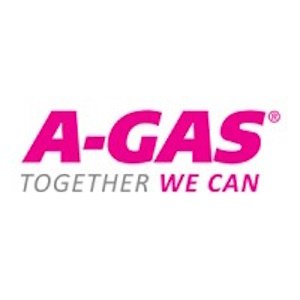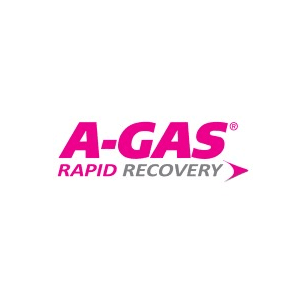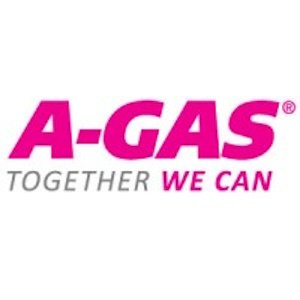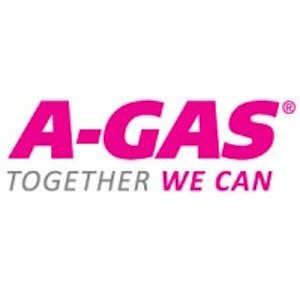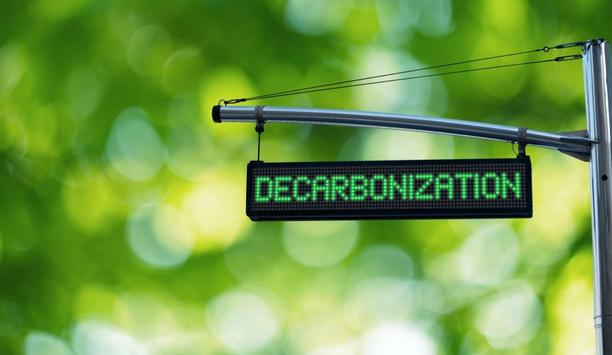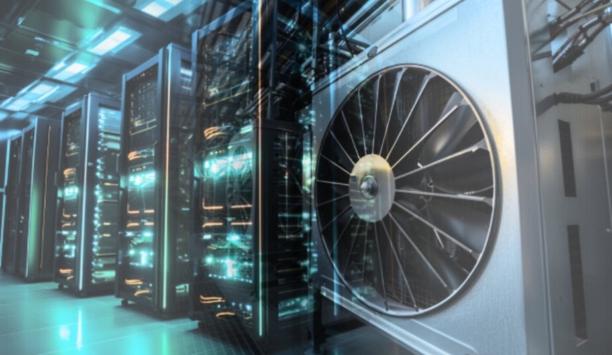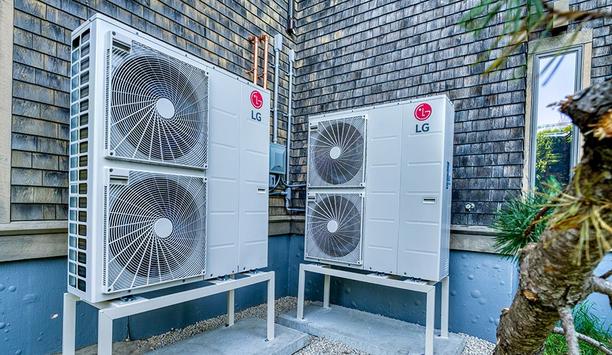A-Gas - Experts & Thought Leaders
Latest A-Gas news & announcements
Recently, the HVACR industry has been managing a new challenge when it comes to refrigerant management: counterfeit refrigerant recovery cylinders. While the industry understands the importance of refrigerant recovery – it safely contains refrigerants, prevents them from being released into the atmosphere, and enables refrigerant reclamation and reuse – this current challenge highlights an awareness gap of what makes a recovery cylinder Department of Transportation (DOT)-certified. With A-Gas’ deep commitment to safety and quality, they find it critical they share this message to keep technicians and anyone who travels on the road safe. Not all recovery cylinders are created equal! Why are DOT-Certified Recovery Cylinders Important? The Department of Transportation (DOT) sets rigorous safety standards for containers used to transport hazardous materials, including refrigerants. These standards ensure the cylinders can withstand the pressures associated with compressed refrigerants and prevent failures. Here's a breakdown of why using in-date DOT-certified recovery cylinders is crucial: Safety: Refrigerants are pressurized liquids. A faulty cylinder could rupture under pressure, causing serious injury or property damage. DOT certification guarantees the cylinder meets safety regulations and can handle the pressure of the refrigerant it's designed for. Environmental Protection: Improperly sealed or damaged recovery cylinders can leak, releasing refrigerants into the atmosphere. DOT-certified cylinders minimize leakage risks, protecting the environment. Compliance: EPA and DOT regulations in the US mandate the proper handling and disposal of refrigerants. Using non-certified cylinders can lead to hefty fines and penalties. Insurance Coverage: In case of an accident involving refrigerant leaks or cylinder failures, using non-certified cylinders could invalidate insurance coverage, leaving you financially liable. Be familiar with the policy. Supply Chain Integrity: Refrigerant recovery enables reclamation and the future re-use of refrigerant gases. But future re-use is impossible if the recovered refrigerant is not properly contained in certified cylinders, leaking into the atmosphere before it is reclaimed. As the phasedown of HFC production and importation tightens under the AIM Act, recovering and reclaiming every pound of gas possible becomes more critical to the future supply of HFCs and other legacy refrigerants. They like to say, Every Ounce Counts™. Identifying DOT-Certified Recovery Cylinders Counterfeit recovery cylinders look similar to legitimate DOT-certified cylinders but lack rigorous testing and construction standards. They pose a significant threat to safety, the environment, compliance, and the industry. The industry has seen counterfeit cylinders from a few brands. If users have a cylinder in question, contact the A-Gas representative directly. Here are some key things to look for when purchasing or accepting a refrigerant recovery cylinder as part of a cylinder exchange program, like Rapid Exchange® or Refri-ClaimTM: DOT Markings: A genuine DOT-certified cylinder will have a clear and permanent DOT marking etched into the metal. This marking includes the DOT symbol, a specification number, and the service pressure rating. In the example, this is the DOT-4BA400 marking: DOT: Department of Transportation Symbol 4BA: Specification Number 400: Service Pressure Rating Manufacturer Information: The cylinder should display the manufacturer’s number (M-Number) to identify the cylinder’s manufacturer. The date of manufacture is also listed on the cylinder. Approved DOT cylinder manufacturers and PHMSA Pressure Vessel information can be found on the DOT’s website, with additional information on M-Numbers and Registration Numbers (R-Number) in this brochure. In the example, this is the M9701 number and date below it, 11/19. Visual Inspection: The cylinder should be free from dents, cracks, or signs of corrosion. Any visible damage can compromise the cylinder's integrity. Users can access the Safe Cylinder Checklist as a resource for their technicians. It's crucial to purchase recovery cylinders from reputable HVACR supply stores or work with a trusted cylinder exchange program that can guarantee the authenticity and certification of their products. A-Gas also recommends that users become familiar with the general requirements for specification cylinders, which are outlined in 49 CFR § 178.35(f). Beyond Certification: Safe Handling Practices Using a DOT-certified cylinder is just one aspect of responsible refrigerant recovery. Here are some additional safety practices to follow: Technician Training: Ensure technicians are properly trained on refrigerant handling procedures, including safe recovery techniques and the proper use of recovery equipment. Anyone handling refrigerant will have this background as part of their 608 certification but reinforcing that training when onboarding new technicians will communicate your commitment to safety and compliance. A-Gas has a comprehensive in-house training program for its EPA-certified technicians who provide on-site refrigerant recovery services as part of Rapid Recovery® or swap cylinders as part of their Rapid Exchange® cylinder swap program. Regular Cylinder Maintenance: Inspect recovery cylinders regularly for any damage or leaks. Have them pressure tested and recertified every 5 years. At A-Gas, they do this at every step of the process. Record Keeping: Maintain accurate records of the type and quantity of refrigerant recovered in each cylinder. This information is crucial for proper disposal or recycling. Using their proprietary in-house cylinder tracking platform, CylTrak®, they use barcodes to track everywhere a cylinder has been since the day it first arrived at one of their facilities. They can track what products are in it, what has previously been in it, and the certifications for the gases. This is also how they can ensure that all of their A-Gas-owned cylinders are within the DOT test date. Pressure Ratings: Adhering to DOT and EPA pressure ratings on recovery cylinders keeps technicians safe. Recovery weights should never exceed 80% of the recovery cylinder capacity. The pressure of a refrigerant at 131 degrees F should not exceed 5/4 of the cylinder’s service pressure. Always verify the weight recovered in each cylinder and each cylinder’s required refrigerant service pressure against a Refrigerant Maximum Net Recovery Weights Chart. Users can learn more about recovery cylinder pressure ratings and access a Refrigerant Maximum Net Recovery Weights Chart on their website. Preventing major safety hazards By prioritizing safety, the environment, and legal compliance, HVACR professionals can ensure the safe and responsible management of refrigerants. Using DOT-certified recovery cylinders is a non-negotiable step in this process. With certified equipment, technicians can safeguard themselves and the environment, while ensuring they operate within legal regulations. Remember, a small investment in a certified cylinder can prevent major safety hazards and environmental damage.
A-Gas, a pioneer in the supply and lifecycle management of refrigerants and associated products and services, announces that Andrew Stride will serve as General Manager for their Canadian operations and expanded business in Nova Scotia. Andrew Stride joined A-Gas in the fall of 2021 and became Director of Operations in Canada in late 2023. During his tenure leading A-Gas’ Canadian operations at the Hamilton site, Andrew has led the start-up facility in Stoney Creek, Ontario, from a greenfield location to a fully functioning down-packing refrigerant site. Prior roles of Stride Andrew will oversee the expansion of the operations and capabilities in the Canadian market Andrew Stride played a crucial role in the business’ recent acquisition of Refrigerant Services Inc. (RSI), a recognized brand in the Canadian refrigerant industry. He successfully led the operations and management integration for the acquisition, helping to ensure that both companies’ high-quality services and customer focus continued. Going forward, Andrew will oversee the expansion of the operations and capabilities in the Canadian market. A-Gas ongoing commitment As part of this acquisition, A-Gas is proud to join the Refrigerant Management Canada (RMC) Pollution Prevention (P2) Program—Canada's pioneering initiative for responsible refrigerant lifecycle management. This step underscores the ongoing commitment to effective lifecycle refrigerant management (LRM) solutions—recovering, reclaiming, and repurposing refrigerants to reduce the risk of emissions and support customers in embracing circular economy principles. A-Gas’ dedication Step underscores the ongoing commitment to effective LRM solutions “Andrew’s leadership has truly brought the best of A-Gas to Canada. Between his experience at our Rhome, Texas site and bringing best practices from other sites across the globe, Andrew has built our Hamilton site into a high-quality facility to serve the Canadian market,” noted Mike Armstrong, Managing Director and President, A-Gas in the Americas. “I could not be prouder of A-Gas’ dedication to assist businesses across Canada in enhancing their refrigerant management strategies and my ability to support the organization in its goals. Beyond that, my family and I have loved living in and enjoying Ontario’s natural beauty, exploring this incredible country, and joining this friendly community,” shared Andrew Stride, General Manager for A-Gas in Canada. A-Gas site in Ontario and RSI sites In addition to offering virgin product, the A-Gas site in Ontario and RSI sites in Dartmouth have the capability to process and clean recovered refrigerant from the local market. Used refrigerant sent to the facility will undergo chemical analysis at the onsite laboratory and will be reclaimed to AHRI-700 standards. As a result, A-Gas will provide the Canadian market with high-speed refrigerant recovery, quality refrigerant supply, a unique and cost-effective refrigerant reclaim program, and on-site laboratory and analytical services.
A-Gas, a world pioneer in environmentally responsible lifecycle refrigerant management (LRM), is proud to announce that President - Mike Armstrong has joined the Refrigerant Emissions Elimination Forum (REEF). This strategic partnership underscores A-Gas's dedication to pioneering sustainable practices in the refrigerant industry, aligning with the forum's mission to eliminate refrigerant emissions and foster a more sustainable future. Importance of reclamation REEF has long championed the importance of reclamation in the refrigerant lifecycle REEF has long championed the importance of reclamation in the refrigerant lifecycle. Composed of volunteers with diverse backgrounds in refrigerants, energy management, and corporate sustainability, REEF is driven by the belief that corporate buyers can catalyze crucial action on refrigerants. This vision aligns with A-Gas's commitment to lifecycle refrigerant management, further solidifying the partnership's potential to drive meaningful change in the industry. Lifecycle refrigerant management "We are excited to collaborate with the REEF, as this partnership will further amplify our efforts to create a more sustainable future through innovative refrigerant management practices," said Mike Armstrong, President of A-Gas. He adds, "Our commitment to lifecycle refrigerant management is unwavering, and we believe that every action we take brings us closer to achieving our environmental goals." Environmental compliance and sustainability objectives A-Gas continues to lead the industry in environmentally responsible practices, supporting businesses in meeting environmental compliance and sustainability objectives. Through its participation in REEF, A-Gas reinforces its position as a champion of sustainable business practices, driving meaningful change in the refrigerant sector.
From A To L: Your A2L Transition Guide
DownloadLeveraging Radiant And Hydronics To Help Achieve Decarbonization Goals
DownloadSealed Connectors In Harsh Environments
DownloadPowering And Cooling Next Generation Data Centers
DownloadDebunking Myths To Promote A Bright Future For Heat Pumps
Download